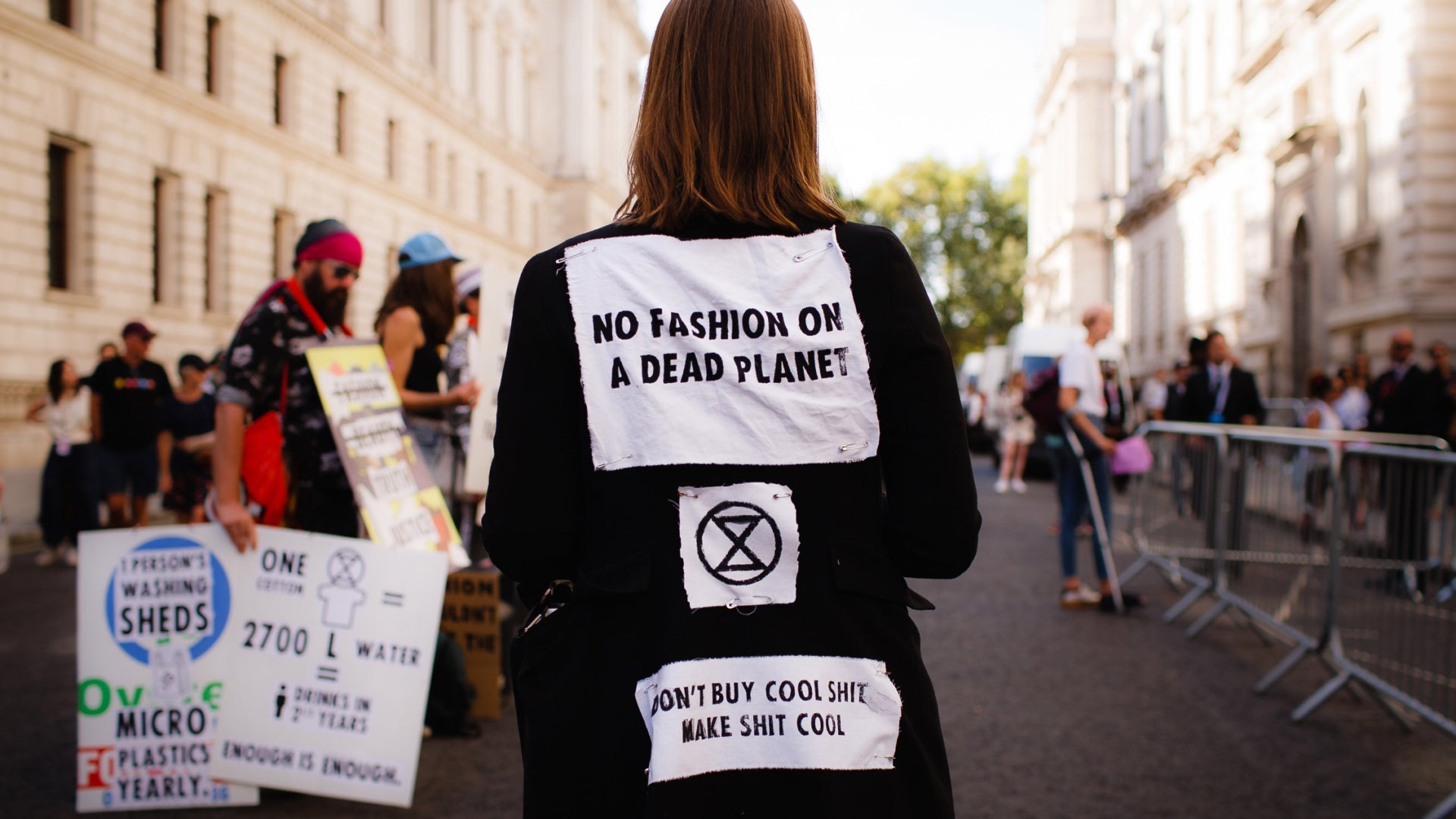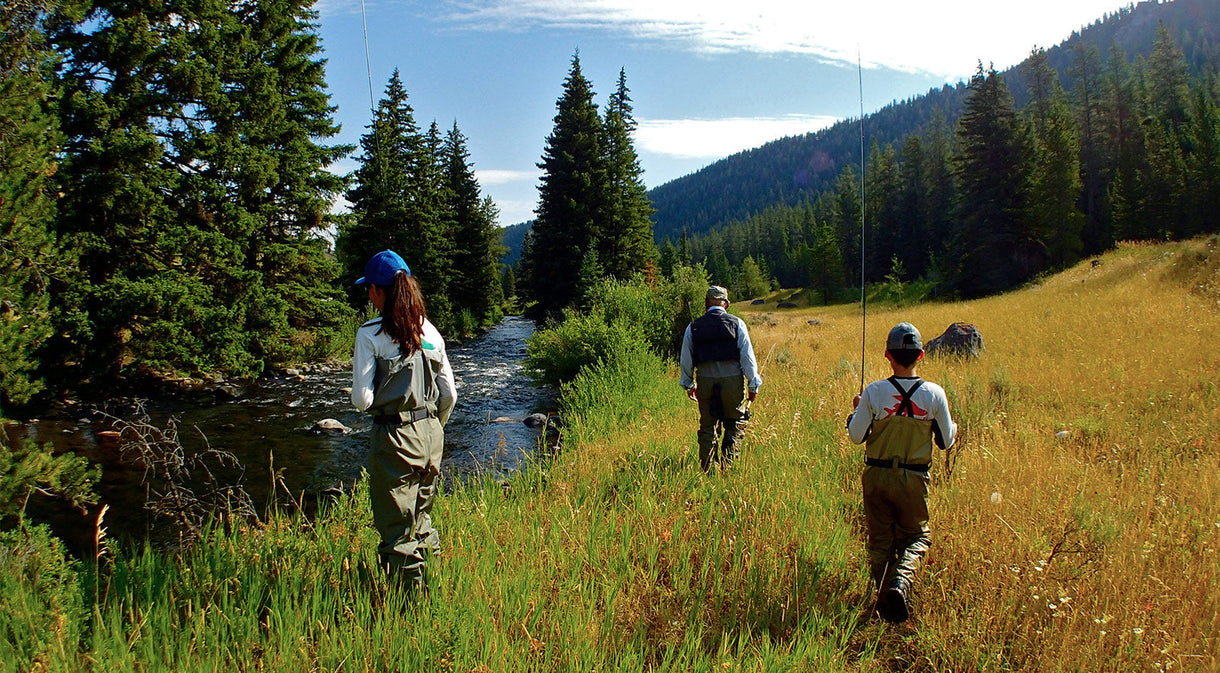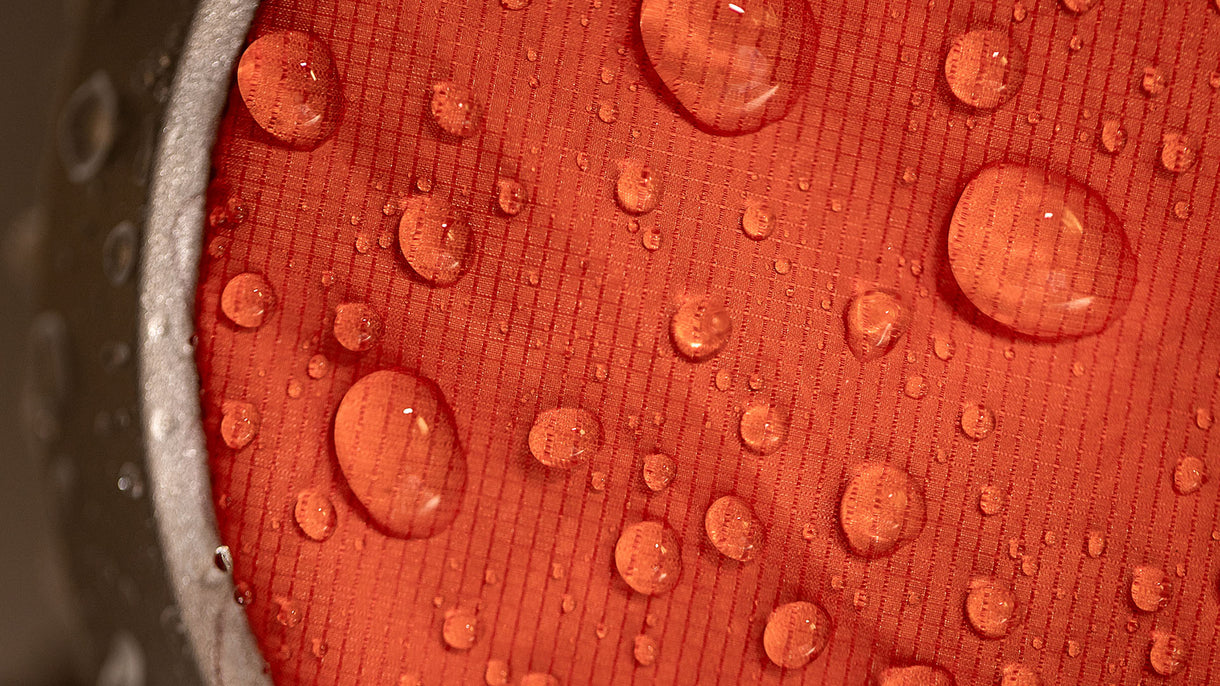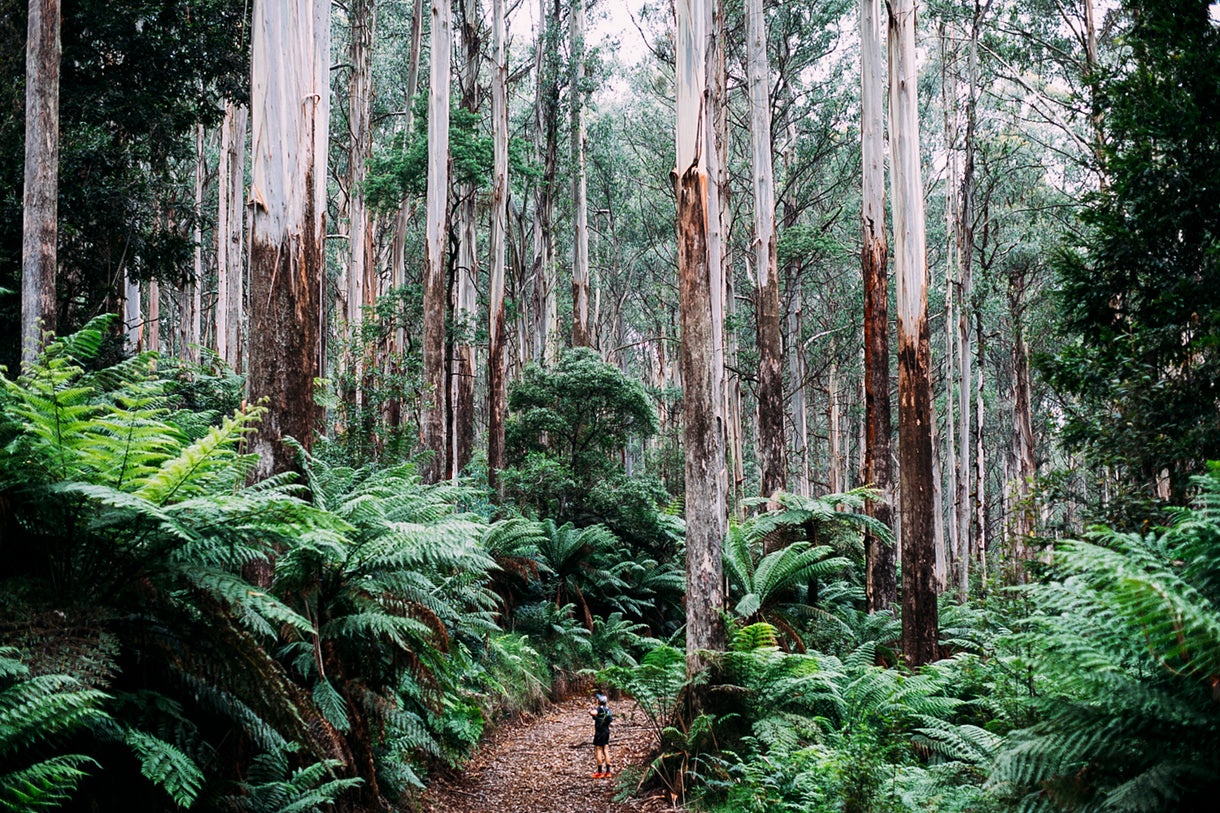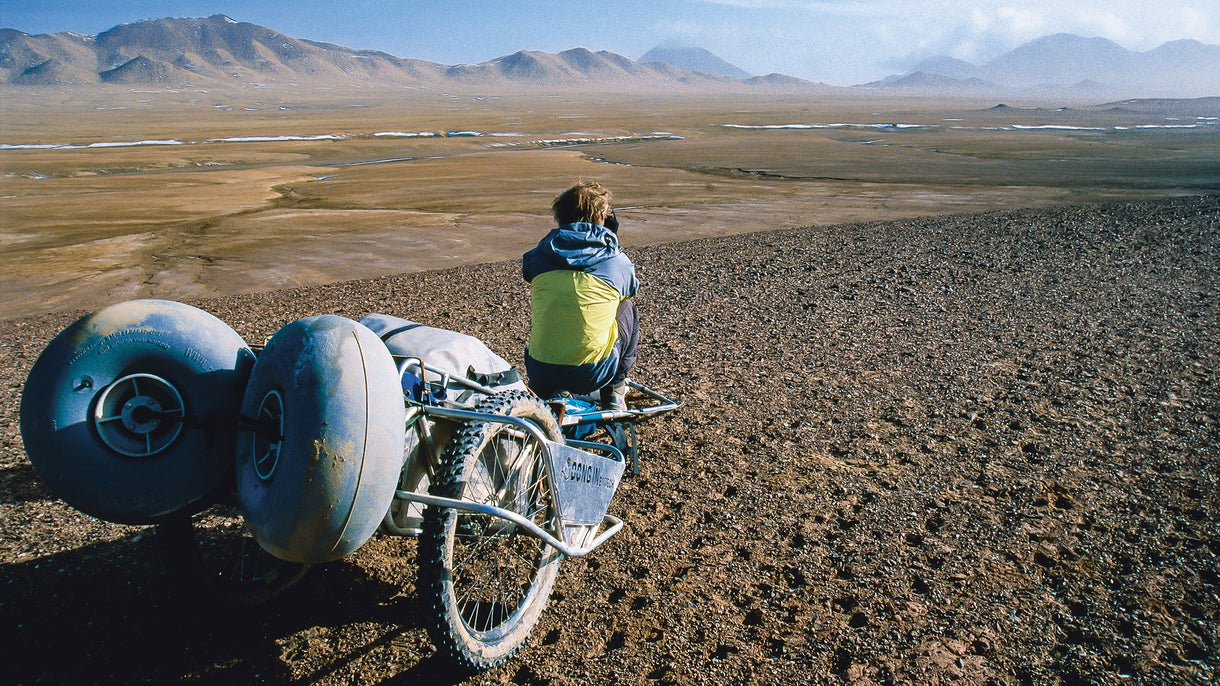Climate and social justice activists are pushing the clothing industry to take better care of people and the planet.
Sarah-Jayne Smith still can’t pinpoint exactly how many PPE masks her nonprofit Magpies & Peacocks created back in March, but it likely numbers in the thousands. The organisation collects, recycles and reinvents old fabric and materials into new pieces – think dog toys out of old H&M tees and table linens turned into gowns – as a way to disrupt the cycle of waste in the fashion industry and mitigate its ecological and social impact. Since launching in 2011, they’ve diverted more than 145 tons of textile waste, upcycled more than 7,000 items and shown their repurposed creations at London Fashion Week. When COVID-19 hit, they realised they were a resource – so they mobilised.
Part of their textile library included non-woven polypropylene – a durable plastic used in everything from kitchen utensils to performance apparel – that had been donated three years ago. They knew they could give new life to a technical fabric and fill a need for frontline workers who needed the fabric most.
“Polypropylene makes a great filter, but it’s terrible for the planet – it would be in landfills for 200 years,” Smith says. “We already had it organised, cleaned, binned and kept pristine so we could immediately get that into production. Instead of learning a new language or making sourdough during quarantine, this is what we were doing.”
 Zero-waste, upcycled, color-popping masks made from sample-fabric material donated to the Magpies & Peacocks nonprofit design house. Photo: Magpies & Peacocks.
Zero-waste, upcycled, color-popping masks made from sample-fabric material donated to the Magpies & Peacocks nonprofit design house. Photo: Magpies & Peacocks.
Collaborating with their network of makers, they worked at breakneck speed to fulfill orders. When they came up for air in April, they pivoted to making masks fashioned from cotton scraps blended with leftover polypropylene to sell to the general public. While other retailers were struggling to stay open for many reasons – including a reliance on overseas materials, labour or shipping – Magpies had a model that could thrive even during a pandemic. They took this opportunity to amplify their activist message: We don’t need to buy new and we don’t need fabric going to a landfill – the industry already has all the material they’ll ever need.
Smith is part of a growing community of climate and social justice activists calling for retailers to make big, necessary changes – specifically, making sure workers have safe and fair labor conditions, establishing circular supply chains that minimise waste and achieving zero, or at least drastically lower, carbon emissions. A quick scan of the apparel industry’s environmental record makes their point clear: Nearly 20 percent of global wastewater comes from making clothes and the industry is responsible for up to 10 percent of global carbon emissions.
Climate activists understand they’re fighting against incessant marketing emails, recommendation algorithms and this idea many of us have internalised that we need to refresh our wardrobes – or redecorate – every season, particularly during the holidays. (This season’s Black Friday and Cyber Monday marketing emails seemed particularly desperate and loud.) But the activists’ mission is to spotlight the connection between fashion and our planet and bring the information to light in easy, accessible and innovative ways that can prevent us from regressing in a post-COVID-19 world.
“We’ve been taught to consume but haven’t been taught to be conscious,” says Smith. Originally a graphic designer, she first saw the consumption problem nearly 20 years ago when she crossed the pond from her native London to Houston, Texas, to work as an interior designer. From the inside of her clients’ homes, she noticed a hoarding mentality.
“The things people were collecting were bizarre,” she says. “Why do we buy two identical things and keep the tags on? Why do we repeat buy things because they’re cheap? The value system seemed odd to me. That’s when I realised I don’t need to be a part of this. But there wasn’t a business model for sustainability then.”
She started with a swap, asking 50 of her clients to chip in still-tagged clothing. The result was about 2,000 items that found new life in new owners.
Many activists see this as the key to mitigating fashion’s impact on the planet. Reusing enables a circular system, compared to the industry standard “take-make-waste” linear model that involves extracting resources from the earth and using up energy to make clothing that often winds up in landfills. But a closed-loop system – where, for example, one top gets used by five people rather than making five new tops for them all – can cut a garment’s carbon, waste and water footprint by 73 percent.
“Thankfully, thrifting has become cool,” says Sophie Anderson, a 17-year-old high school student in New York City and a national coordinator for XR Youth, part of the grassroots organisation Extinction Rebellion. “Even my friends at school who aren’t involved in activism are thinking about their carbon footprint.”
Anderson has helped stage numerous direct actions with XR Youth, like a guerrilla fashion show at last February’s New York Fashion Week, where they created outfits out of scraps like bubble wrap, leftover fabric and even McDonald’s paper bags. It was a call-in to the industry – if they could create cool, sustainable pieces in just a few hours with some thread and hot glue guns, surely the creatives behind some of fashion’s biggest brands could do it, too. Most recently, she and her team launched a series of mask-mandated, socially distanced flea markets in Manhattan with vendors donating 60 percent of profits to mutual aid organisations, inspired by this summer’s wave of Black Lives Matter protests and the fight for Indigenous rights.
 Sophie Anderson closes a deal during XR Youth NYC’s flea market. The high school students swapped clothes and other items, keeping them out of landfills, and raised US$1,500 for mutual aid groups in New York City. Photo: Lucia R. Harrison.
Sophie Anderson closes a deal during XR Youth NYC’s flea market. The high school students swapped clothes and other items, keeping them out of landfills, and raised US$1,500 for mutual aid groups in New York City. Photo: Lucia R. Harrison.
At the core of climate and fashion activists’ work is education. The through line of earth-to-fashion is less advertised than in other industries, like food. A carton of pasture-raised eggs might come with an explainer on just how many square feet those chickens have to roam. And some farmers share extensive information about what their cows eat, down to the specificity of “grass-finished.” They’re providing answers because customers have been asking questions.
“A lot of people think fashion is produced by machines,” says Max Gilgenmann, cochair of Future Fashion Forward, a Berlin-based branch of the nonprofit organisation Fashion Revolution. “They have no idea how many people work on fashion or under what circumstances.”
Future Fashion Forward has taken their education to the streets through flash mobs and direct-action events, spotlighting the people behind the clothes, who work on farms, in factories and in warehouses.
One of their most successful viral campaigns was the 2015 social experiment, 2 Euro T-Shirt, centered around a vending machine in Berlin’s bustling Alexanderplatz district. Shoppers popped a 2-euro coin into the machine but instead of getting a T-shirt, a video started playing, showing dire conditions in textile factories, where women and children work 16 hours per day and earn just 13 cents per hour. At the end, the shoppers could choose to buy or donate those 2 euros to Fashion Revolution. (Eight out of 10 shoppers donated.)
Momentum for climate and fashion activism has been picking up speed in recent years, but 2020’s combination of pandemic plus election plus more time than most of us have ever had to think about our consumption has catapulted the movement to a boiling point. Black Friday was a ripe time for activists to put pressure on big brands. On retail’s big day, Make Amazon Pay – started by a group of international climate activists, including Greenpeace and Progressive International, as well as Amazon warehouse workers – launched worldwide protests, strikes and a campaign demanding that the tech behemoth increase employee wages and sick leave, allow unions, commit to zero emissions by 2030 and cut ties with institutions that have demonstrated racist behaviour. Separately, Fashion Revolution created a social media campaign rallying people not to shop between Black Friday and Cyber Monday to show brands they won’t accept overproduction, especially at the cost of people and the planet. Their campaign also urged people to ask big brands about their waste responsibility and how they protect their workers with the hashtags “#whatsinmyclothes” and “#whomademyclothes.”
Ultimately, activists agree the pressure to fix retail should be on the brands, not the customer, but taking time to change personal shopping behaviour is an important part of the seismic shift we need. “We want people to come along on the journey of being an educated consumer, understanding values of the things they buy and being more creative,” Smith says. “We have to give people the tools and building blocks to become better custodians of our planet. Once you crack the door open to that information, you have to ask yourself, ‘How can one person be instrumental in change?’”
Buy Less, Demand More – You have the power to change the way clothes are made.
Learn More.
Banner image – Activists from Extinction Rebellion UK staged die-ins and funeral marches during London Fashion Week and called out the clothing industry's role in the climate crisis. Photo: David Cliff.
____________________________________________________________________
Author Profile



